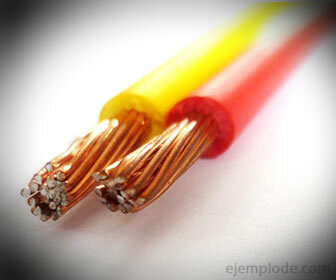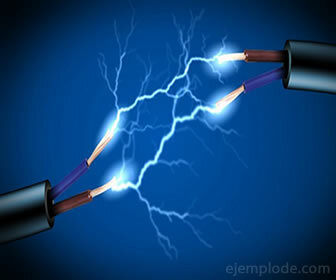Solid State Characteristics
Chemistry / / July 04, 2021
The solid state Matter is one in which its atoms or molecules are compact, joined together, giving it a consistency and a physical form. It has properties that distinguish it from the other states of aggregation: liquid and gaseous, and that will give it the physical attributes and widely observed chemical behaviors.
The main characteristics of the solid state are:
In general, solids display the following characteristics, each of which will be explained separately, in more detail:
- Internal structure: amorphous or crystalline
- Melting point
- Density
- Hardness
- Ductility
- Malleability
- Thermal conductivity
- Electric conductivity
- Magnetism
Internal structure: amorphous or crystalline
Solids have, by the arrangement of their atoms, two possible internal configurations:
- Amorphous solids
- Crystalline solids
The amorphous solids They are those that make up an irregular and disorderly structure among their particles. These types of solids are isotropic, so their fusion does not occur at a defined temperature. When they break, these solids are left in pieces of very varied sizes and of diverse shapes; for example, glass.
The crystalline solids They are those that, thanks to the bonds between their atoms or molecules, form crystalline, ordered and compact structures. These types of solids melt at a fixed temperature. When they break, they leave pieces of regular shapes. These solids include sugar and salt.
Melting point
The melting point is temperature to which the solid begins to change to liquid state. In the case of inorganic chemical compounds, which are mineral substances, this temperature is very high. In metals, for example, the melting point can reach thousands of degrees Celsius.
On the other hand, in organic chemical compounds, such as carbohydrates, proteins and alcohols, to name a few examples, the melting point is much lower. And, in fact, in many organic solids, a temperature of autoignition is reached, and instead of starting to melt they start to burn in a combustion.
Density
Density is the physical property of matter that indicates the amount of mass in each unit of volume. In solids it is generally greater than in liquids and gases, since the particles are more compact and ordered. However, there may be an exception in solid materials that are very porous.
Hardness
Hardness is the resistance that opposes the surface of the solid to be scratched or worn by another. Examples of solids with high hardness are diamond and tungsten carbide. Both materials are used to make tips for lathe shop machinery, in which steel is cut to design mechanical parts. Examples of soft solids are talcum powder and gypsum.
Ductility
Ductility is the unique ability of some metals to be molded and made of wires, without breaking with the effort that is printed on them. Examples of ductile solids are copper, aluminum, gold, silver. In fact, the purpose of creating wires is to conduct electrical current, and all of the metals mentioned are good conductors.

Malleability
Malleability is the ability of solid materials to be deformed and that various geometries are created with them, without breaking. This property is used in metals to create thin sheets. For example, aluminum is taken to very small thicknesses to create aluminum foil. There are also metal sheets for making coins.
Thermal conductivity
Thermal conductivity is the property of materials that allows heat energy is transported through them. The solids that have the best thermal conductivity are the metals copper, gold and silver. On the other hand, solids that do the opposite are called Thermal insulation. Examples of thermal insulating solids are polyurethane and polystyrene.
Electric conductivity
Electrical conductivity is the property of materials that allows electrical energy circulates through them. The solids that have the best electrical conductivity are the metals copper, gold and silver. On the other hand, solids that do the opposite are called electrical insulators. Examples of solid electrical insulators are polyethylene and polypropylene.

Magnetism
Magnetism is a natural property of solids like magnetite (Fe3OR4), and consists of the ability to attract other metal objects. For attraction to occur, one of the two metallic solids must have natural or induced magnetism by means of an electric field. Solids that have magnetism are called magnets or magnets, usually.
Solid State Link Types
In the solid state there can be three types of bond between the atoms that make it up:
- Ionic bond
- Covalent bond
- Metallic bond
The ionic bond It occurs between two atoms or groups of atoms that carry an electrical charge. These carriers of electric charge are called ions, and they have to join a positive one to another negative, to neutralize their charges against each other. An example of an ionically bonded solid is sodium chloride (NaCl, table salt).
Ionic solids can dissolve in water, so that their ions are separated, leaving in the aqueous medium the positive and negative charges. This combination of the ionic solid with water is a solution, which, thanks to the dispersed charges, will have the ability to conduct an electric current.
The covalent bond occurs between two atoms, one of which has valence electrons to spare. Another atom that is deficient in these electrons will receive them. An example of a solid with covalent bonds is sugar or sucrose, of formula C12H22OR11.
The metallic bond It occurs between the atoms of a metal element. Depending on the type, the atoms will form a mesh-like arrangement that will give the solid its physical and chemical properties.
It may interest you:
- Characteristics of the liquid state.
- Gas characteristics.

